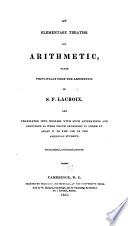 | Leonhard Euler - Algebra - 1821 - 380 pages
...determinate numbers ; so that the above example will furnish the following theorem; viz; The product of the sum of two numbers, multiplied by their difference, is equal to the difference of the squares of those numbers. This theorem may be expressed thus : (a + 6) X (a — 6) = aa — 66.... | |
 | Thomas Keith - Arithmetic - 1822 - 354 pages
...differing by an uuiti is equal to the difference of the sijimm of those numbers. . 4. The sum of any two numbers, multiplied by their difference, is equal to the difference of the squares of the same numbers. 5. The sum of any two numbers will measure the sum of their cubes... | |
 | James Mitchell - Mathematics - 1823 - 666 pages
...-V- when that is — ; and by — when that is -f- ; because the product of the sum of two quantities multiplied by their difference, is equal to the difference of their squares. DIVISION ot" ftatw$, or Divided Jtatio, is when of tour proportional quantities, the differences of... | |
 | Silvestre François Lacroix - Arithmetic - 1825 - 404 pages
...determinate numbers; so that the above example will furnish the following theorem ; viz. The product of the sum of two numbers, multiplied by their difference, is equal to the difference of the squares of those numbers. This theorem may be expressed thus : (a + 6) x (a — 6) = oa — 66.... | |
 | Silvestre François Lacroix - Arithmetic - 1825 - 394 pages
...determinate numbers ; so that the above example will furnish the following theorem ; viz. The product of the sum of two numbers, multiplied by their difference, is equal to the difference of the squares of those numbers. This theorem may be expressed thus : (a + b) X (a — b) =. aa — bb.... | |
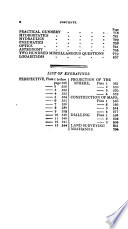 | Peter Nicholson - Mathematics - 1825 - 1046 pages
...squares, together with twice their product. From Example 2 we hare another (32.) THEOREM. The product of the sum of two numbers -multiplied by their difference, is equal to the difference of the squares of those numbers. And from this may be derived a third (33.) ТНВОДЕМ. The difference... | |
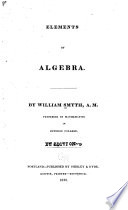 | William Smyth - Algebra - 1830 - 278 pages
...To multiply a + 6 hy a — 6, we have (a + b) (a — J) = o2 _ 62 Whence, the sum of two quantities multiplied by their difference is equal to the difference of their squares. Thus, (7 +4) (7 —4) =49— 16 = 33 So also (8 a2 + 7 a 62) (8 a2 — 7 a 62) = 64 a6 — 49 a2 64 The manner... | |
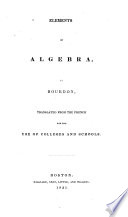 | Bourdon (M., Louis Pierre Marie) - Algebra - 1831 - 326 pages
...things which vary are the numerical values of the given quantities. SECOND QUESTION. — THEOREM. 5. The sum of two numbers multiplied by their difference is equal to the difference of the squares, or second powers of those numbers. Let 12 and 9 be the two numbers; their sum is 21, and... | |
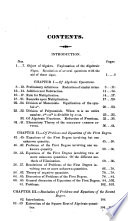 | Bourdon (M., Louis Pierre Marie) - Algebra - 1831 - 446 pages
...denominator is p— Vq. For multiplying in this manner, and recollecting that the sum of two quantities, multiplied by their difference, is equal to the difference of their squares, (5), we have aa(P~ (p+Vq)(p-Vq) p3-q " p3-q i- Vq)_ap + aVq j p3-q in which the denominators are rational.... | |
 | Education - 1835 - 402 pages
...other. For example, the formula (a + 6) x (a - 6) = axa — bxb, which in common algebra expresses that the sum of two numbers multiplied by their difference is equal to the difference of their squares, will now be a compendious representation of the following geometrical theorem : — Let there be two... | |
| |